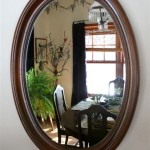How To Fix a Side Mirror In a Car
Side mirrors are essential for safe driving, providing crucial visibility of surrounding traffic. Damage to a side mirror, whether from a collision or accidental impact, can significantly compromise a driver's ability to navigate safely. Fortunately, many side mirror repairs are relatively straightforward and can be performed without professional assistance, saving time and expense. This article provides a comprehensive guide on how to fix common side mirror issues.
Assessing the Damage
Before beginning any repair, it is crucial to assess the extent of the damage. This assessment will determine the necessary tools, materials, and repair strategy. Examine the mirror housing, the glass itself, and the internal mechanisms controlling mirror adjustment. Note any broken components, loose connections, or signs of impact. Take photos to document the damage before starting repairs, which can be helpful for reference during reassembly.
Minor damage, such as a cracked mirror glass with an intact housing and mechanism, requires a simple glass replacement. More substantial damage, like a broken housing or damaged internal components, may necessitate replacing the entire mirror assembly. If the damage extends to the internal wiring or the vehicle's door panel, professional assistance may be required.
Gathering Necessary Tools and Materials
Once the damage is assessed, gather the appropriate tools and materials. Common tools required for side mirror repair include screwdrivers (Phillips and flathead), pliers, a socket wrench set, and potentially a pry tool. Always consult the vehicle's repair manual for specific tool recommendations. The necessary materials will depend on the damage. Replacing the mirror glass requires a replacement mirror, often available online or from auto parts stores. Repairing the housing might require adhesive, epoxy, or body filler. Replacing the entire assembly requires a new side mirror unit compatible with the vehicle's make and model. Ensure all materials are high-quality and appropriate for automotive applications.
Replacing the Mirror Glass
If the mirror glass is cracked or broken, but the housing and adjustment mechanism are intact, replacing just the glass is the most efficient repair. Begin by carefully removing the broken glass. This may involve gently prying it out with a tool designed for this purpose, or using adhesive remover if the mirror is glued in. Wear gloves to protect hands from sharp edges. Once the old glass is removed, clean the housing surface and ensure the adhesive remnants are removed. Align the new mirror glass with the housing clips or adhesive points. If using adhesive, ensure it is suitable for automotive use and apply it evenly to the designated areas. Press the new glass firmly into place and allow adequate time for the adhesive to cure according to the manufacturer's instructions. Once the glass is securely in place, test the mirror adjustment mechanism to ensure proper functionality.
Repairing the Mirror Housing
Damage to the mirror housing, such as cracks or small breaks, can often be repaired without replacing the entire assembly. Clean the damaged area thoroughly with a suitable cleaning agent and allow it to dry completely. For minor cracks, specialized plastic adhesive or epoxy can be used to bond the broken pieces. For larger breaks or missing pieces, body filler may be necessary. Apply the filler according to the manufacturer's instructions, ensuring a smooth and even surface. After the filler dries, sand the area to achieve a flush finish. The repaired area can then be primed and painted to match the vehicle's color.
Replacing the Entire Mirror Assembly
If the damage to the mirror housing is extensive or if the internal mechanisms are broken, replacing the entire mirror assembly is often the most practical solution. Disconnect the electrical connector supplying power to the mirror's adjustment controls. This typically involves accessing the connector through the inside of the vehicle's door panel. Locate the retaining bolts or screws that secure the mirror assembly to the door. Carefully remove these fasteners, taking care not to drop them inside the door. Once the fasteners are removed, carefully detach the mirror assembly from the door. Install the new mirror assembly by reversing the removal process. Connect the electrical connector, secure the retaining bolts or screws, and test the mirror adjustment function and any integrated features, such as turn signals or heating elements.
Addressing Electrical Issues
If the mirror adjustment controls are not functioning, the problem might lie in the electrical system. Check the fuse related to the power mirrors. A blown fuse is a common electrical issue and can be easily replaced. If the fuse isn't the problem, the wiring may be damaged or disconnected. Inspect the wiring harness leading to the mirror for any breaks or loose connections. Repair any damaged wiring or reconnect any loose connectors. If the wiring appears intact, the issue may reside in the mirror adjustment switch itself, requiring replacement.
Regular maintenance, including cleaning and inspecting the side mirrors, can help prevent future issues. Addressing any damage promptly will prevent further complications and ensure continued safe driving.

Automotive Maintenance 101 Replacing Side View Mirrors

Haynes Shows You How To Replace Your Car S Door Mirror Glass

How To Fix A Broken Car Side View Mirror Easy And Free

Do You Need Vehicle Mirror Damage Repair Glasper

Broken Side Mirror What Are The Repair Options And Cost

Wing Mirror Motor Broken Must I Replace The Whole Torque

Broken Side Mirror Here S How To Get It Fixed By A Mechanic Quickly In The Garage With Carparts Com

Automotive Maintenance 101 Replacing Side View Mirrors

Do I Need To Entirely Replace A Ed Mirror Yourmechanic Advice

Broken Side Mirror What Are The Repair Options And Cost








